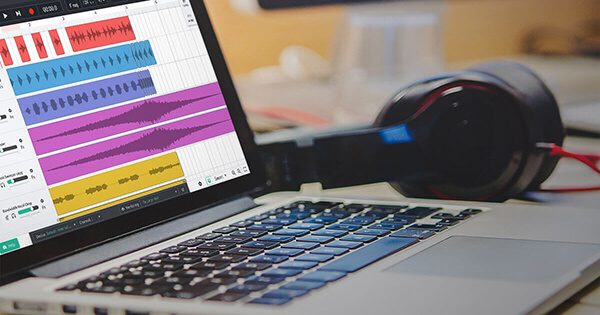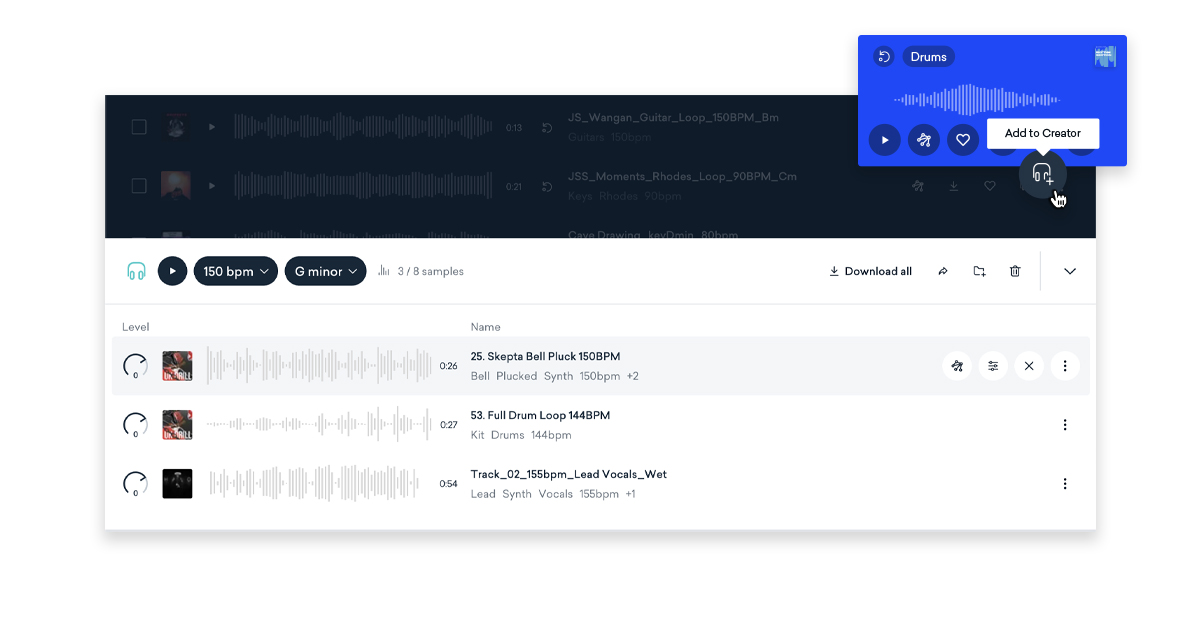Music loops are incredibly helpful to write tracks — with loops you may make drums, synths, and melodies snap together in a DAW.
What are music loops?
Music loops are sound recordings that might be designed for repeating play. A loop could be a drum part, bassline, melody, or any sound that’s supposed to be performed in a repeating pattern.
Artists love utilizing music loops because they’re straightforward to arrange, they have a natural, however, repetitive rhythm, and they’re pre-recorded leaving minimal manufacturing work to make use of them.
The primary makes use of looping music were pioneered by producers within the 50s who found they might actually loop tape in reel-in-reel machines to create fascinating effects like slap-back delay.
Later on, producers began looping drum recordings to get a rigid, extra robotic effect—although a looped drum part will always sound more human than a drum machine.
At this time music loops are an enormous part of the workflows of most music producers.
With modern sample marketplaces, producers can discover all of the loops they should encourage the place to begin a song.
Right here’s how one can take advantage of music loops and collage samples together to write your personal tracks.
Use music loops to write your personal tracks
Music loops are an extremely powerful option to write your personal tracks.
The best part is you don’t really need all that lot of music theory knowledge, you just need a primary concept or direction for what you want to make.
Choose a style
If you wish to make a loop-based track begin by selecting a style.
What’s your vibe? Are you into electronic music, or is pop more your thing?
You probably have a thought of what you wish to make already. However, being specific might help you narrow down the sorts of samples you’re looking for when you begin sifting via pattern packs.
Do you wish to make a trap track? Try to identify a subgenre—whether that be drill, or emo-trap or Atlanta entice, or one thing else.
If you wish to make electronic music keep in mind that it has so many genres, so listen to the music that inspires you and attempt to determine a niche bucket that it belongs to.
You’ll discover better samples quicker if you understand you wish to make a house, techno, dubstep, trance, or some mixture.
Discover loops on a samples marketplace
Alright, you’ve got a creative direction to your loop-based track, now it’s time to go discover a handful of loops to type the idea to your track.
Certain, you might make your personal samples by utilizing a looper tool in your DAW.
However, the best option to discover loops that you may legally pattern and use to make your personal tracks is thru a royalty-free sample marketplace.
In case you haven’t checked out Creator yet, definitely try it. It’s the proper device for listening to how up to eight completely different loops sound together.
With Creator, the original key or time signature of your samples doesn’t matter. The device will routinely pitch shift and time stretch every loop in your required key and tempo.
So go forward and decide any loops you want, compile them into Creator, and when you prepare to use them you possibly can download their time stretched, pitch-shifted, and ready to go in your DAW.
Download and prepare your loops
Cool, you discovered some loops, they’re all in key and also you’re beginning to join the dots about where to go with your track.
Let’s download these suckers and begin arranging them in your DAW.
Most DAWs make it tremendously easy to drag and drop music loops straight into the time and begin arranging instantly.
Just bear in mind to set your DAW’s grid to suit the tempo of the loops you downloaded.
As you begin arranging think about song construction and attempt to structure parts into sections.
Begin with an intro and construct up into a verse, let your verse carry on, and then switch things up for the chorus.
There are lots of methods to construct your track, so try some of the other articles we’ve written on the topic.
Think about adding little risers or effects to make your transitions extra impactful—a riser and then a drop before the chorus is always an effective way to get your followers dancing.
For the newbies out there, this song template generator for Ableton Live is nice for getting an outline of your track so you possibly can color in between the lines.
Get creative with it!
Although you’re utilizing loops that click on together in your DAW, there are no guidelines about how your track ought to sound when you begin arranging.
Adding effects like reverb, delay, sidechain compression, filter sweeps, EQ, panning, and beyond all represent alternatives to put your personal unique flair into your compositions.
You clearly don’t have to rely solely on loops to write your tracks either—recording some guitar, keys, bass, or vocals of your personality is one of the best ways to put yourself into the track.
Loops are nice for forming the idea of your song and getting your creative juices flowing—however never be afraid to get creative and take risks.


